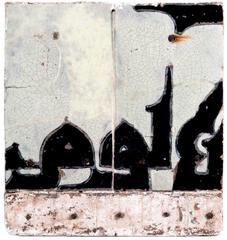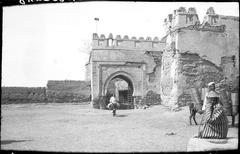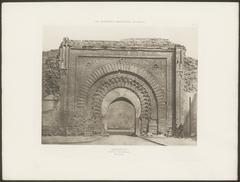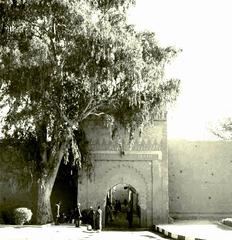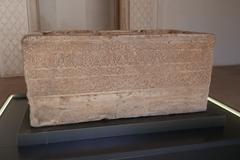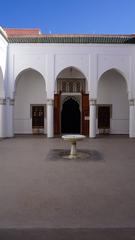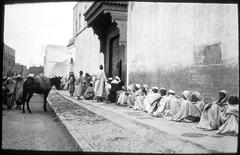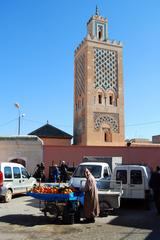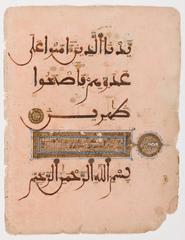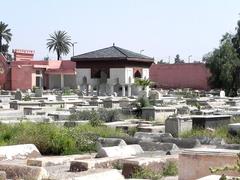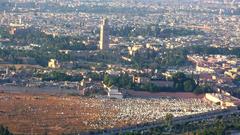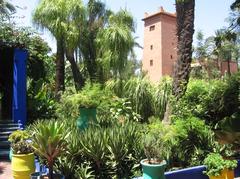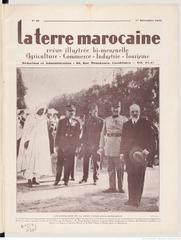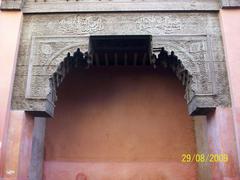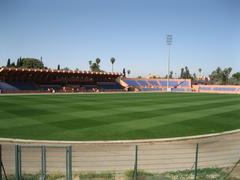Bab Debbagh Visiting Hours, Tickets, and Historical Significance in Marrakesh
Date: 04/07/2025
Introduction: Bab Debbagh—A Portal to Marrakesh’s Heritage
Nestled at the northeastern edge of Marrakesh’s ancient medina, Bab Debbagh stands as a living testament to Morocco’s architectural ingenuity and artisanal tradition. Known as the “Gate of the Tanners,” this 12th-century monument was more than a defensive structure; it was a bustling commercial hub and the beating heart of the city’s renowned leather tanning industry. Today, Bab Debbagh offers visitors a unique opportunity to experience an authentic slice of Marrakesh’s past amid the energy of the present-day medina.
This comprehensive guide explores Bab Debbagh’s historical context, architectural features, and cultural significance, and provides practical information for visitors—covering opening hours, ticketing details, travel tips, and nearby attractions.
For further planning and in-depth insights, consult sources such as Guido.ma, Dbagh.org, and Rusty Travel Trunk.
Historical Overview: Origins and Evolution
Constructed during the Almohad dynasty under Sultan Abd al-Mu’min in the 12th century, Bab Debbagh (“Gate of the Tanners”) was designed not only for defense but also as a key entry point for the city’s thriving trade in leather goods. The area surrounding the gate became a center of artisanal production, with tanneries established just outside the medina walls to take advantage of water access and to keep odors away from residential areas (guido.ma, Marrakech Riad).
Throughout its history, Bab Debbagh has served as a gateway for caravans, royal processions, and everyday citizens, standing witness to Marrakesh’s political and economic transformations.
Architectural Features and Innovations
Structure and Defense
Bab Debbagh features a robust design with thick stone and red brick walls. Its bent entrance passage, requiring multiple turns to traverse, was a strategic defensive innovation. Flanking towers with arrow slits provided added security. The gate is adorned with classic Almohad horseshoe arches and geometric motifs, reflecting a blend of Andalusian and Maghrebi styles.
Materials and Craftsmanship
The structure is built from locally sourced stone, baked clay bricks, lime mortar, and reinforced wooden beams, making it both sturdy and well-suited to Marrakesh’s climate.
Bab Debbagh Tanneries: A Living Tradition
Adjacent to the gate, the Bab Debbagh Tanneries have operated since the city’s founding, employing ancestral methods to transform raw hides into richly dyed leathers. The process uses natural agents such as lime, pigeon droppings, and plant-based tannins, with artisans working in a network of interconnected vats (dbagh.org, Reitmaier, 2021).
Leatherworking at Bab Debbagh remains a cornerstone of Marrakesh’s economy and identity, with skills and trade secrets passed down through generations (Marrakech Morocco).
Visiting Bab Debbagh: Hours, Tickets, and Practicalities
Gate Access
- Hours: Bab Debbagh as a city gate is accessible 24 hours a day. For safety and the best experience, visit between 8:00 AM and 6:00 PM.
- Entry: Free of charge.
Tanneries and Artisan Workshops
- Hours: Generally open daily from 9:00 AM to 6:00 PM.
- Entry: Typically free, but guided tours or photography permissions may incur a small fee (usually 50–100 MAD for tours).
- Guided Tours: Available through local operators and highly recommended for detailed understanding and safety.
Accessibility
- The area is pedestrian-friendly but features uneven surfaces and narrow alleys. It may be challenging for those with mobility issues.
Getting There
- On Foot: A 20–25 minute walk from Jemaa el-Fnaa through the medina.
- By Taxi: Taxis can drop visitors near the gate. Always negotiate fares in advance (30–50 MAD is typical).
- Public Transport: Buses stop near the medina; a short walk is required from there.
Travel Tips for an Enriching Visit
- Best Time: Early mornings offer cooler temperatures and fewer crowds; weekdays are quieter than weekends.
- What to Bring: Comfortable shoes, a hat, water, and a camera.
- Odors: The tanneries have strong scents; bring a scarf or mask if sensitive.
- Dress Code: Modest attire is recommended—shoulders and knees covered.
- Photography: Always ask permission before photographing workers; small tips may be appreciated.
- Local Customs: Be respectful and avoid touching goods without consent.
- Safety: Beware of unofficial guides; agree on costs before tours.
Nearby Highlights
- Souk Jeld: Marrakesh’s main leather market.
- Ben Youssef Madrasa: A masterpiece of Islamic architecture.
- Koutoubia Mosque: The city’s largest and most iconic mosque.
- Jemaa el-Fnaa: The main square and cultural heart of Marrakesh.
Cultural Significance and Modern-Day Role
Bab Debbagh and its tanneries are symbols of Marrakesh’s enduring craftsmanship and communal identity. The preservation of traditional tanning methods is not only an economic asset but a vital part of Morocco’s intangible heritage (dbagh.org). The tanneries foster community bonds and support numerous local families.
Despite challenges from modernization and environmental concerns, the Bab Debbagh Tanneries adapt by balancing heritage with sustainability and leveraging tourism as a means of preservation (Supertravelr, Heritage Wanderlust).
FAQs
Q: What are the visiting hours for Bab Debbagh and the tanneries?
A: The gate is accessible 24/7; tanneries and workshops are open from 9:00 AM to 6:00 PM.
Q: Is there an entrance fee?
A: Access to the gate is free. Guided tours or photography in the tanneries may incur a small fee.
Q: Are guided tours available?
A: Yes, and they are recommended for a richer experience.
Q: Can I purchase leather products on-site?
A: Yes, local shops offer a wide range of leather goods.
Q: Is the area wheelchair accessible?
A: Due to narrow and uneven pathways, accessibility is limited.
Q: What is the best time to visit?
A: Early morning on weekdays is ideal.
Summary and Final Tips
Bab Debbagh, with its adjoining tanneries, is a must-visit for anyone seeking to immerse themselves in Marrakesh’s historical, architectural, and artisanal heritage. Free to access, the gate provides a stunning architectural backdrop, while guided tannery tours reveal the complexity and significance of Morocco’s leather tradition. Plan your visit for daylight hours, dress comfortably and modestly, and be prepared for a sensory-rich experience. Enhance your trip by exploring nearby attractions and leveraging digital resources like the Audiala app for maps and guides.
For more on the city’s history and travel resources, consult:
References and Further Reading
- Bab Debbagh: A Complete Guide to Marrakesh’s Historic Gate, Visiting Hours, Tickets, and More
- Bab Debbagh Tanneries in Marrakech: Visiting Hours, Tickets, and Cultural Heritage Guide
- Pits, Pots, and Pigeons: Artisanal Leather Production in Marrakesh
- The Gates of Marrakech: Bab el Debbagh
- Bab Debbagh Tanneries: Visiting Hours, Tickets & Historical Insights
- Visiting Bab Debbagh in Marrakesh: Hours, Tickets, and Insider Tips
- Marrakech Morocco: Finding the Best Tanneries Experience
- Travel Tips—Along Dusty Roads
- Lonely Planet: Things to Know Before Traveling to Marrakesh
- Supertravelr: 5 Tips to Visiting the Tanneries in Marrakech
- Heritage Wanderlust: Visit the Marrakech Tanneries
